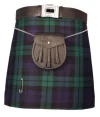- Time of past OR future Camino
- First one in 2005 from Moissac, France.
Hi - I was thinking about the 10% rule for rucksack loads and so on and realised that I couldn't remember gender differences being mentioned.
On the whole - kilo for kilo male muscle is much stronger than female muscle. Also, as males flood with testosterone they build more and denser and more efficient upper body muscle - yet we don't seem to factor this in.
Par ex: with reference to top level athletes and quoting D Leyk (et al) "But certain fundamental sex differences exist between men's and women's physical prowess. Men's greater upper body strength is a prime example. Women's lower body strength tends to be more closely matched to men's, while their upper body strength is often just half that of men's upper body strength. In a 1993 study exploring gender differences in muscle makeup, female participants exhibited 52 percent of men's upper body strength, which the researchers partially attributed to their smaller muscles and a higher concentration of fatty tissues in the top half of the female body [source: Miller et al]. Another study published in 1999 similarly found women had 40 percent less upper body skeletal muscle [source: Janssen]. Even controlling for athletic aptitude doesn't tip the upper body strength scales in favor of the female; an experiment comparing the hand grip strength of non-athletic male participants versus elite women athletes still revealed a muscle power disparity in favor of the menfolk."
This being the case should the 10% rucksack rule be different for females? 8% or even 6% for instance? And should women walk shorter day distances than men? So ... should there be a Camino guide for females with different day stages? Or is the female pelvis better designed to have a pack strapped to it?
Do female partners find they are exhausted after keeping up with their partner (of same size and fitness)?
I have seen many times, on long ago long-distance group cycle rides I used to organise and run, an exhausted woman struggling to keep up with her male partner, who tends to wait in impatience stance, until she catches up - that type of marriage has never looked like a shared and fun experience to me.
Apart from this there are definite other physical differences (you may have noticed). In archery women need to wear a forearm brace as their arms are a different shape to males and the released bow-string hits them every time. Does the difference in shape of hip make it harder to walk long distances carrying a pack?
Before I get any emotive replies based on false gender equality such as "well, I am a woman and stronger than my husband, you are being chauvinist, you idiot, how dare you even mention this" and so on I am writing about the scientifically acknowledged gender dimorphism and how it may (or may not) affect women on the Camino; and that this subject never seems to be mentioned, which doesn't seem quite fair.
I am interested - except for Alison Rajou, guide books seem to be written by men, stages set by men .... any thoughts?
On the whole - kilo for kilo male muscle is much stronger than female muscle. Also, as males flood with testosterone they build more and denser and more efficient upper body muscle - yet we don't seem to factor this in.
Par ex: with reference to top level athletes and quoting D Leyk (et al) "But certain fundamental sex differences exist between men's and women's physical prowess. Men's greater upper body strength is a prime example. Women's lower body strength tends to be more closely matched to men's, while their upper body strength is often just half that of men's upper body strength. In a 1993 study exploring gender differences in muscle makeup, female participants exhibited 52 percent of men's upper body strength, which the researchers partially attributed to their smaller muscles and a higher concentration of fatty tissues in the top half of the female body [source: Miller et al]. Another study published in 1999 similarly found women had 40 percent less upper body skeletal muscle [source: Janssen]. Even controlling for athletic aptitude doesn't tip the upper body strength scales in favor of the female; an experiment comparing the hand grip strength of non-athletic male participants versus elite women athletes still revealed a muscle power disparity in favor of the menfolk."
This being the case should the 10% rucksack rule be different for females? 8% or even 6% for instance? And should women walk shorter day distances than men? So ... should there be a Camino guide for females with different day stages? Or is the female pelvis better designed to have a pack strapped to it?
Do female partners find they are exhausted after keeping up with their partner (of same size and fitness)?
I have seen many times, on long ago long-distance group cycle rides I used to organise and run, an exhausted woman struggling to keep up with her male partner, who tends to wait in impatience stance, until she catches up - that type of marriage has never looked like a shared and fun experience to me.
Apart from this there are definite other physical differences (you may have noticed). In archery women need to wear a forearm brace as their arms are a different shape to males and the released bow-string hits them every time. Does the difference in shape of hip make it harder to walk long distances carrying a pack?
Before I get any emotive replies based on false gender equality such as "well, I am a woman and stronger than my husband, you are being chauvinist, you idiot, how dare you even mention this" and so on I am writing about the scientifically acknowledged gender dimorphism and how it may (or may not) affect women on the Camino; and that this subject never seems to be mentioned, which doesn't seem quite fair.
I am interested - except for Alison Rajou, guide books seem to be written by men, stages set by men .... any thoughts?






















